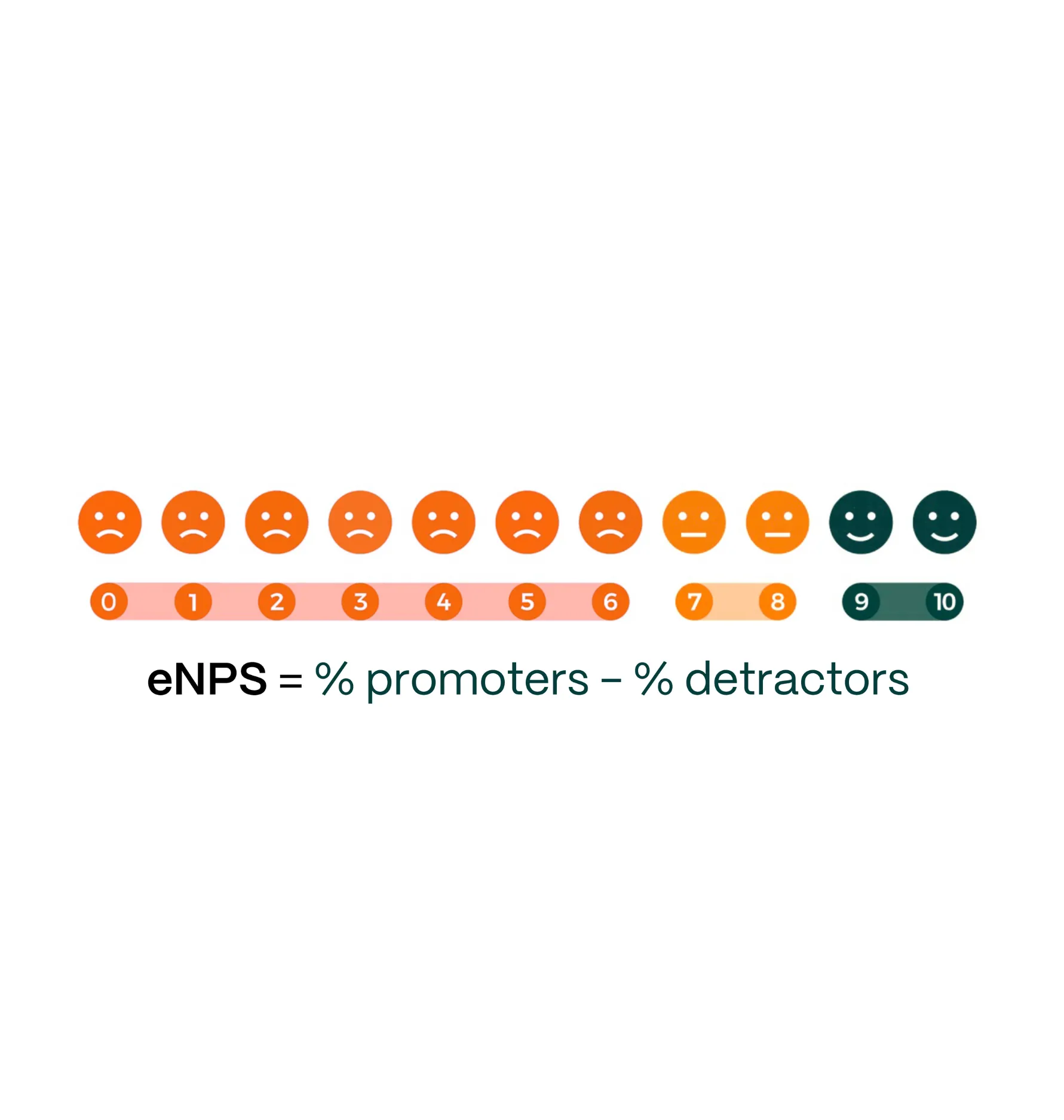Employee satisfaction is a critical aspect of any successful organization. To accurately understand organizational health, two key metrics come into play: engagement and eNPS (employee Net Promoter Score). While each metric offers a unique perspective, their combined importance cannot be overstated. In this blog post, we will delve into the differences between engagement and eNPS, showcasing why using both metrics is vital for gaining comprehensive insights into employee satisfaction.
Engagement: The depth of attachment and commitment
Employee engagement serves as the foundation for determining employee satisfaction. It refers to the emotional commitment and active involvement an employee demonstrates towards their work and the organization they belong to. It measures the level of investment and passion an employee has in their job and the extent of effort and dedication they put into their work.
Numerous contributing factors influence engagement, including effective leadership, positive relationships with colleagues, growth opportunities, fair treatment, work-life balance, and a sense of purpose and belonging.
Employee engagement is crucial because it directly impacts employee productivity, job satisfaction, and turnover rates. Engaged employees are highly motivated, less likely to leave their positions, and deeply committed to achieving organizational objectives.
By collecting input through engagement surveys, organizations gain significant insights into the overall employee experience, discover areas for improvement, tailor initiatives such as training programs, performance management systems, and recognition strategies to boost engagement levels.

eNPS: A specific measure of employee eentiment
Maintaining employee happiness is an ongoing endeavor that requires continuous effort. The eNPS metric serves as a valuable signal, indicating the level of work required and the urgency to address any concerns.
Employee Net Promoter Score (eNPS) is a method used to measure how likely employees are to recommend their organization as a great place to work. It revolves around one question: On a scale of 0-10, how likely are you to recommend your company as a place to work?
By utilizing eNPS, you can evaluate how your existing practices influence employee satisfaction and engagement, gaining crucial insights into their experiences within the organization.
eNPS formula = % of promoters minus % of detractors

Promoters are highly satisfied and engaged employees who give a rating of 9 or 10 on the eNPS scale. They actively advocate for the company, contributing to a positive employer brand and attracting top talent.
Passives fall into the middle range, scoring either 7 or 8 on the eNPS scale. While their scores are not factored into the eNPS calculation, passives should not be overlooked. Although they may not exhibit strong advocacy or negativity, they still contribute to the overall employee population. By engaging with passives, organizations can uncover valuable insights, address potential areas of improvement, and strive for higher levels of employee satisfaction.
Detractors are employees who provide a score between 1 and 6 on the eNPS scale. These individuals are dissatisfied and may be inclined to speak negatively about their employer. Identifying detractors is crucial as their negative sentiment can potentially impact team morale, productivity, and the overall employer brand. Addressing their concerns and working towards improving their experience is essential for mitigating potential risks.
The importance of both metrics
While eNPS can be a useful tool for understanding employee satisfaction, it's crucial to recognize that satisfaction alone does not equate to engagement. Merely satisfied employees may recommend the company for reasons unrelated to genuine engagement, potentially leading to misguided conclusions. Engagement encompasses a broader perspective, capturing employees who are truly invested, motivated, and actively contributing to organizational success.
Therefore, using both engagement and eNPS metrics is essential for obtaining in-depth understanding of employee satisfaction to identify areas for improvement and formulate effective strategies to enhance the employee experience.
It empowers companies to differentiate between satisfied employees who may lack engagement and those who actively contribute towards organizational goals.
By acknowledging these distinctions, organizations can foster a culture that encourages genuine engagement, propelling innovation, attracting top talent, and ultimately driving business growth.
Continue reading our blogs in order to learn more about employee engagement and concrete tools that provide you with help in employee retention.

